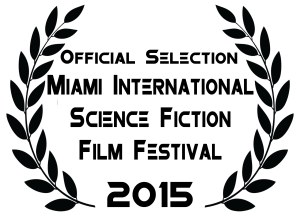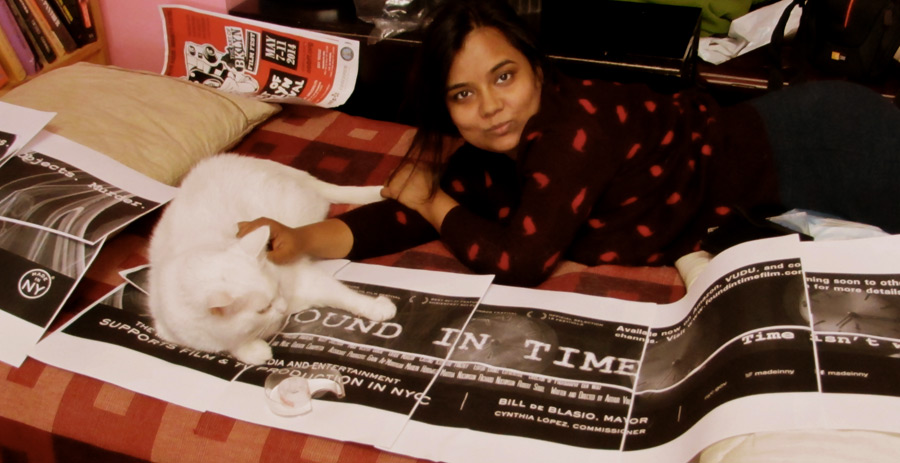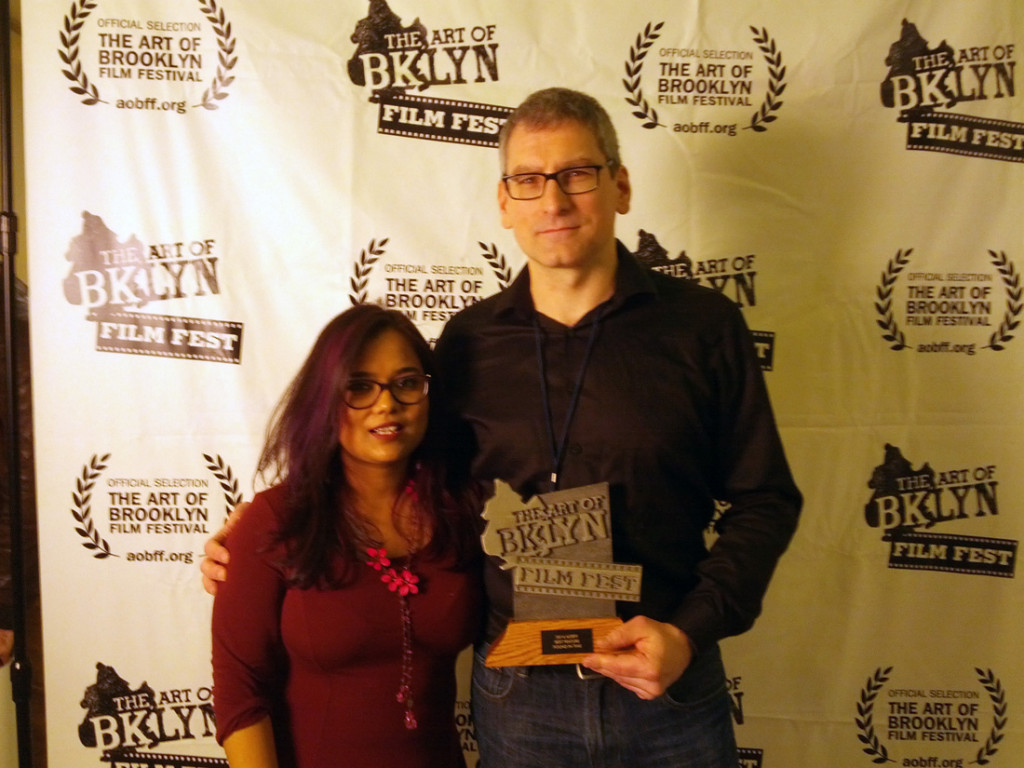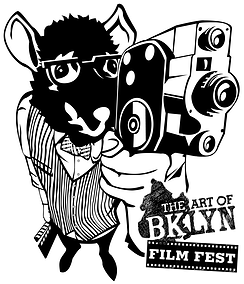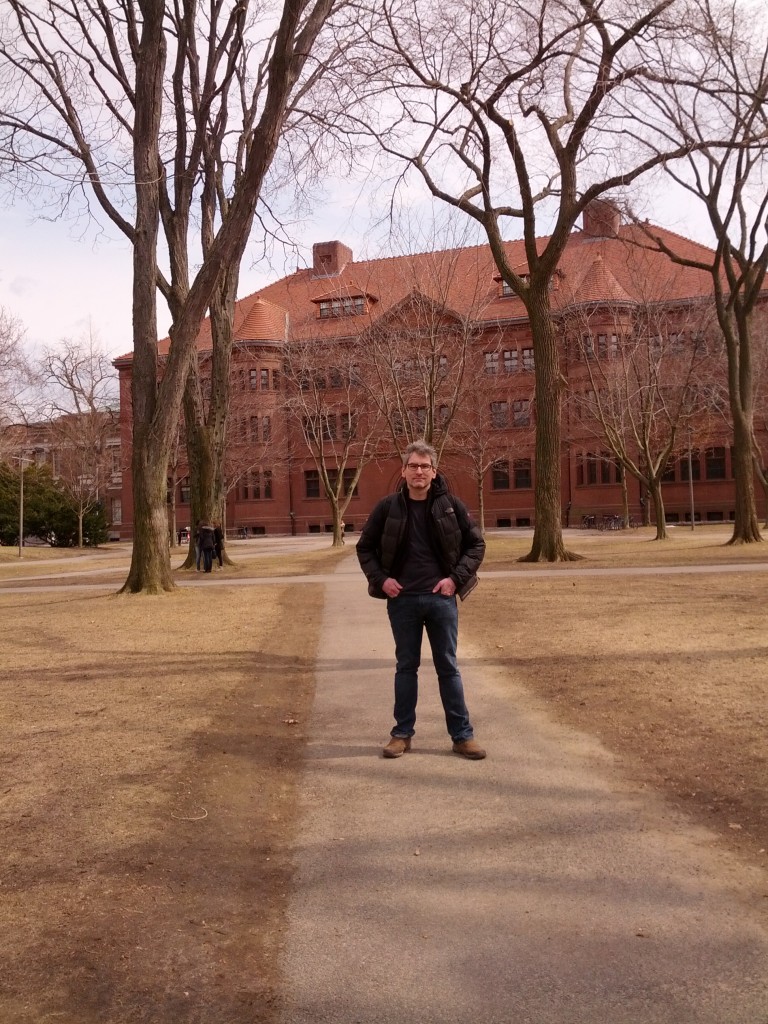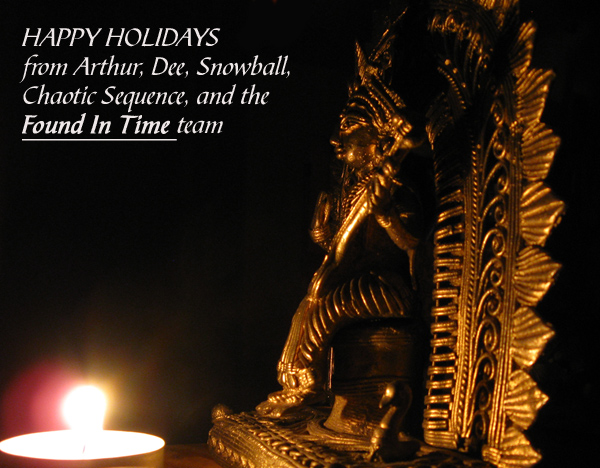ScottSchirmer.com
This was a great year for films, television programs, webisodes, shorts. I saw a ton of great material, either streaming online or at festivals. I didn’t go to mainstream film screenings as much as in years past. I also watched a lot of day-and-date programming at home.
I have mixed feelings about streaming. The quality is still pretty terrible to my eye. Just pop a BluRay or ordinary DVD into the player (if you can still find the remote), hit play, and you’ll see what I mean. Wow – blacks that look black as opposed to milky gray. No dropped frames. No noise in the image.
On the other hand, the quality issues tend to melt away when weighed against the convenience of watching films right away. And it’s also given me the opportunity to watch some more obscure or older films in a low pressure way (hey, it was part of the subscription, so if I don’t like it I can just hit stop). I’ve also developed the (possibly) bad habit of binge-watching tv.
It sounds like I’ve finally caught up with 2009, right? Well, that’s interesting in and of itself, isn’t it? Streaming has become so ubiquitous that to talk about it seems weird. It’s an interesting example of what O.B. Hardison called “disappearing” – when something becomes thoroughly integrated into the mainstream culture, it disappears. No one talks about jump-cuts, nonlinear narratives, stereo, widescreen, color, or even CGI (yes, we talk about it, but it’s no longer a “gee won’t this be great one day” thing) anymore. But those were each revolutionary techniques/technologies when they first came out, whose impact is still resonating in how we make and watch movies today.
On the other hand – and maybe this is a side-effect of getting older – I see a lot of things that seem ‘new’ that really aren’t. I’ve been online since 1985, first on BBSes and then on bitnet. The social experience is nothing new to me. Streaming is a like a return to the VHS era, when we recorded shows and films and then binged-watched them at parties.
In film this past year, we also saw a lot of things that seemed new that weren’t. Stanley Donen and Vincent Minelli would have liked the color scheme of Spring Breakers even if they felt nothing for the subject matter (though the film does recall one of Keanu Reeves’ first films, River’s Edge). The Place Beyond the Pines and Prisoners feel similar to films made during the ‘New Hollywood’ years (late 60s-early 70s), especially in terms of the acting style, pacing and themes. And don’t get me started on Lars Van Triers. Tarkovsky, Tarr, Bergman, Goddard, and others were pushing the language of film long before he showed up, and were doing it in more interesting ways.
This is not to say I didn’t like Place… and Prisoners; on the contrary I thought they both were amazing films, and daring each in different ways. But they weren’t necessarily new. That’s okay though. I liked Elysium too, even though it’s a fancier version of Metropolis. It’s good to rework and reexamine themes from time to time; sometimes the remakes/reboots can actually become their own, fresh creations (Batman Begins is a good example, leading to The Dark Knight). I think though that it’s become harder to make anything genuinely new. The endless stream of reboots, while nothing new for Hollywood (The Wizard of Oz with Judy Garland, Christmas Carol with Alastair Sims, Howard Hawks’ His Girl Friday, were all remakes), does seem to be getting more circular and self-sustaining. Independent filmmakers who want to do something a little different are having a harder go of getting wider recognition for their work than during the ’90s.
Anyway, enough rambling. Here’s my annual Overhyped and Underrated list for 2013. Keep in mind that the overrated films weren’t necessarily terrible, just overpraised or praised for the wrong reasons. And the underrated films weren’t necessarily fantastic, but were more deserving of praise than they received. But first, a quick look at my favorite indie films of this past year. One of the things they all had in common was that they were ambitious, had a lot of heart, and weren’t afraid to mix genres and expectations around.
FAVORITE FESTIVAL FEATURES
Lonely Boy (dir. Dale Fabrigar): A film about a young man suffering from debilitating schizophrenia? When I heard about this and about the fact that it was playing at 9am at the Phoenix Film Festival, I was like “hell I think I’ll skip it.” I’m SO GLAD I DIDN’T. This is a fantastic film – funny, serious, heartwarming, heartbreaking, stylish, beautiful, gritty. It’s like five films in one. Go see it! http://www.lonelyboyfilm.com/ – it’s playing in film festivals and will be coming out sometime this year.
Channeling (dir. Drew Thomas): This is a very stylish, quick-moving sci-fi thriller. The main conceit is that there’s a device that looks like a contact lens that allows you to ‘stream your life.’ Sounds great, except when big money’s involved, things go haywire. People vie for sponsorship dollars on their channels, doing more and more outrageous things for increased viewership. But when one of the self-made ‘stars’ gets killed, his older brother decides to investigate – and finds himself in a deep web of crime, corruption, and celebrity gone haywire.
Found. (dir. Scott Schirmer): OMFG. This is a fantastic horror film, a coming of age story, a meditation on the relationship between real and film violence, a family drama… all in one movie. What does a young kid do when he finds out his brother is a serial killer? What does he love his brother? How did he get that way? Does he have that in him as well? This is an movie that’s not gratuitous (though it is gory), that takes its time with its characters, that’s beautiful to look at.ScottSchirmer.com
The Invoking (dir. Jeremy Berg): Saying this is a horror film doesn’t really do it justice. The premise sounds familiar – four friends go to a remote rural property that one of them, Sarah, inherited from her estranged family. She doesn’t remember much about the place, and what she does remember isn’t good. But then something really interesting happens – the film begins to creep you out by what it doesn’t show you but only suggests. When Sarah starts seeing things, is she remembering events, participating in them, making them up, or doing something completely new? Is the place haunted on some level, or is she? It eschews simple jump scare tactics for a more thoughtful, under-the-skin approach, and it pays off big-time. The Invoking‘s Official Site.
Leaving DC (dir. Josh Criss): The found footage genre is ridiculous in many ways – why not just put the damn camera down, right? But here it totally works. A consultant with OCD moves out of Washington DC, and starts sending ‘video diaries’ of his new life in a remote dreamhouse in the woods back to his friends in his old OCD support group. Now that he’s finally clear of the city and the distractions, he can work from home! Except that something in the woods seems to be seriously screwing with him at night. Is it some side effect of his meds? Is it a projection of his anxiety? Is it some local kids screwing with the new guy? Or something else? Over the course of the film you see the poor man disintegrate, while trying as best he can to make sense of what’s going on.
Menschen (dir. Sarah Lotfi). This is a short film, unlike the others. But I can’t wait for the feature-length version. It’s the story of an Austrian captain who ‘inherits’ a boy with severe Downs syndrome, while trying to keep what’s left of his company alive at the end of World War II. Instead of doing the expected thing – killing the boy – he takes him under his wing instead. It’s a great film, made for peanuts, and shows what a talent Sarah is. Menschenthemovie.
OVERHYPED
Gravity: What? What’s wrong with you, Arthur? You love space, you love the lead actors, you love ‘2001’, you love Cuaron? What’s not to love about this film? Well, I give it credit for giving me an amazing experience – there were moments during the film when I was literally on the edge of my seat, gasping for air or feeling like I was tumbling out of control. And it was great to see a film give the finger to Hollywood – an action film carried by a leading woman over 40! BUT, the story just… wasn’t there. It’s almost like a thrill ride or a video game. I like playing video games and going on thrill rides. And the movie succeeds on that level. But I expected more from the folks who’ve done such fine work in the past, injecting political commentary, meditations on life and existence, and even humor into what could have been “average” fare.
Star Trek: Into Darkness Some good action scenes, but a completely generic mess of fan-service slop plus plot holes, lens flares, and a weird attitude towards violence. It glorifies violence in every shot (look at those people getting sucked into space! Look at that beautifully-rendered crash) while declaiming it in wooden speeches.
12 Years a Slave – but not for the film itself. This is a film that I think has been massively misunderstood by critics, who either have dismissed it as ‘cold’ or have fallen all over themselves in what I can only think of as some form of guilt. What it truly is is a beautifully nuanced look at how our society (both past and present) makes us complicit in slavery at every level. Slavery invades Solomon’s body first, but then it takes his mind and his soul. Like Polanski’s The Pianist, it’s only by virtue of sheer luck that he survives.
The Way Way Back: A fun, feel-good movie. But nothing super-special. If anything, it almost felt like a by-the-numbers reworking of earlier coming-of-age films. Again, that’s okay, but I guess I expected something… more.
About Time: This did get a lot of grief from critics, but it was also overhyped in some circles. The big problem I had is that… nothing happens. A film about time weirdness should have something happening, right? Some tragedy or another? The cast was lovely, and I will happily watch Bill Nighy in just about anything, but this felt like a second draft of an outline for a film rather than a film.
UNDERRATED
12 Years A Slave – What? Well, here’s the thing. A surprisingly large number of critics gave this film a hard time for being ‘too clinical.’ Others suggested it was ‘too stiff.’ To me, that’s its main strength. Instead of going for a gauzy, designed-to-death Spielberg schmaltzfest, the film steps back a bit and lets the subject speak for itself. The best moments in the film are the quietest, when we see the sometimes large, sometimes subtle changes slavery is making in Solomon’s psyche.
Elysium – Critics picked on this one for all sorts of crazy reasons. The one I most frequently encountered was that the film wasn’t subtle. WTF? Did they SEE District 9? What, exactly, was subtle about the mech fight at the end of that film, complete with a flying pig? Subtlety isn’t Blomkampf’s strong suit. Blowing up shit while delivering a balls-out indictment of a corrupt and unjust system is what he’s good at, and that’s exactly what we got here. And why do critics always so easily put down films that talk about class issues, exactly? I could’ve copied and pasted reviews of In Time into those of Elysium.
Europa Report – This is a great sci-fi film, and actually makes good use of the found footage conceit. It’s a post-mission analysis of a corporate-sponsored manned trip to Europa, what the crew found there, and how fucked up the mission got at various stages. Most of the footage comes from on-board ship or spacesuit cameras, plus interviews shot before and after the mission. Did I mention that it’s meticulously researched? It’s tense, interesting to watch, beautiful to look at, and cost the lunch money of Gravity, while also managing to deliver a more complex story. The worst thing about the film is that it came out the same year as Gravity.
Prisoners – this is an amazingly tense, dark thriller that should have gotten a MUCH bigger boost than it did. I really don’t want to spoil it for you.
Pacific Rim – this is not the second coming of cinema. But it’s the first time that a heavily-CGI-based action film got me excited in a long time. The globe-spanning message was great (we have to stick together to overcome this) plus the crackling fight scenes were just wonderful.
To The Wonder – a LOT of critics hated this film, and I can understand why. The Olga Kurylenko’s manic-pixie girlfriend act gets a little old after a while. But it’s an amazing film nonetheless – a depiction of the emotional life, with all the plot drained out. In a sense, it’s the kind of film you really have to be the right state to appreciate. Your emotions will interact with those of the film’s characters in ways that are largely invisible when watching a more conventional film.
The Place Beyond the Pines – Great film. You think it’s going to be a heist movie, then it turns into a smalltown-corruption story, then it becomes a coming-of-age drama, then a multi-generational saga. It’s so many things, packed into one film, that you want to applaud the sheer audacity of it. I can forgive the done-to-death Ryan Gosling blue-collar performance (I think he’s got a closet full of them at this point).
There’s a lot more to talk about, but this article is already too freaking long, so let’s move on to 2014 and a better year for everyone, everywhere!
